
Androctonus maroccanus is a species of scorpion of the family Buthidae. Along with other members of the genus Androctonus it is also known by the collective vernacular name fat-tailed scorpion. A. maroccanus is endemic to the Atlantic coast of central Morocco.
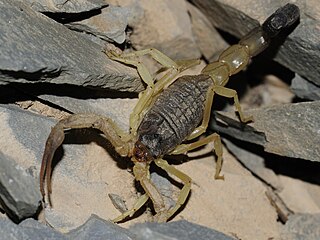
Hottentotta is a genus of scorpions of the family Buthidae. It is distributed widely across Africa, except for most of the Sahara desert. Species in the genus also occur in the Middle East, the Arabian Peninsula, southeastern Turkey, Iraq, Iran, Afghanistan, Pakistan, India, Nepal, Cape Verde Islands, and Sri Lanka (introduced).

Hottentotta tamulus, the Indian red scorpion, also known as the eastern Indian scorpion, is a species of scorpion of the family Buthidae. It occurs in most of India, eastern Pakistan and the eastern lowlands of Nepal, and recently from Sri Lanka.
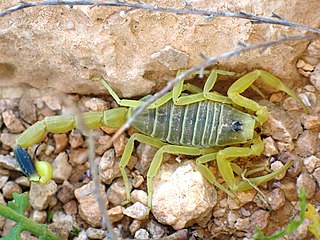
Leiurus is a genus of scorpion of the family Buthidae. The most common species, L. quinquestriatus, is also known under the common name Deathstalker. It is distributed widely across North Africa and the Middle East, including the western and southern Arabian Peninsula and southeastern Turkey. At least one species occurs in West Africa.
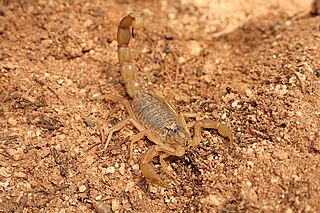
Buthus is a genus of scorpion belonging and being eponymous to the family Buthidae. It is distributed widely across northern Africa, including Morocco, Mauritania, Algeria, Tunisia, Libya, Egypt, Senegal, Guinea-Bissau, Nigeria, Sudan, Somalia, Ethiopia, Djibouti, as well as the Middle East, including Israel, Palestine, Jordan, Lebanon, Iraq, Yemen, and possibly Saudi Arabia and southern Turkey. Its European range includes the Iberian Peninsula, southern France, and Cyprus.
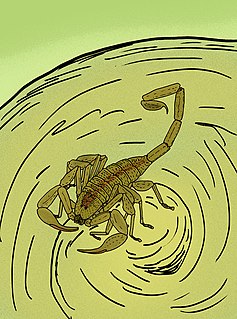
Tityus exstinctus is an extinct species of scorpion belonging to the family Buthidae. It is only known from a single male collected in 1884 in the northern range of Martinique. The species epithet based on the fact that this taxon was already extinct when it was described.

Mesobuthus is a genus of scorpions, containing the following species:
Isometrus garyi is a species of scorpion in the family Buthidae. It is endemic to Sri Lanka. It is not known fatal to humans.
Hottentotta finneganae is a species of scorpion, belonging to the family Buthidae. It was first found in Pakistan.
Hottentotta jabalpurensis is a species of scorpion, belonging to the family Buthidae. It was first found in Madhya Pradesh, India.
Hottentotta jalalabadensis is a species of scorpion of the family Buthidae. It was first found in Afghanistan.
Hottentotta stockwelli is a species of scorpion of the family Buthidae. It was first found in Andhra Pradesh and Maharashtra, India.

Hottentotta conspersus, the Sesriem Scorpion, is a species of scorpion of the family Buthidae.

Neobuthus factorio is a species of scorpion from the family Buthidae found in Somaliland.

Neobuthus erigavoensis is a species of scorpion from the family Buthidae found in Somaliland.
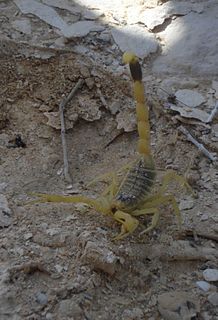
Leiurus abdullahbayrami is a species of scorpion in the family Buthidae. Its venom is highly toxic to humans, but can be used in medical development.
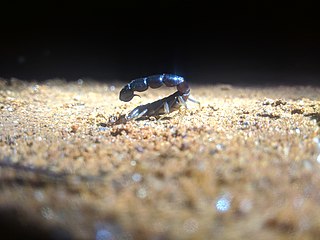
Buthoscorpio is a genus of scorpions in the family Buthidae.
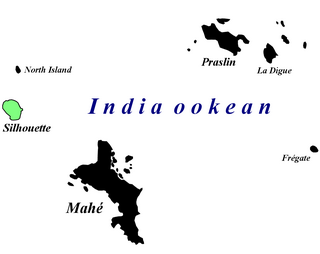
Afrolychas braueri, commonly known as the Seychelles forest scorpion, is a critically endangered species of scorpion in the family Buthidae. It is currently thought to survive only on Silhouette Island, Seychelles, although the species was historically found on two additional Seychellois islands. This scorpion lives in leaf litter in forests that are largely unaffected by invasive plant species. It is a small, yellowish-brown scorpion measuring 25 to 36 mm in length and is best distinguished from similar scorpions by having three conspicuous keels on its mesosoma's dorsal surface. While not much is known about the Seychelles forest scorpion’s ecology due to the paucity of sightings, it is known to rely solely on its venom to capture its prey and to care for its young. Its venom is not dangerous to humans.
Charmus is a genus of buthid scorpions native to India and Sri Lanka.












